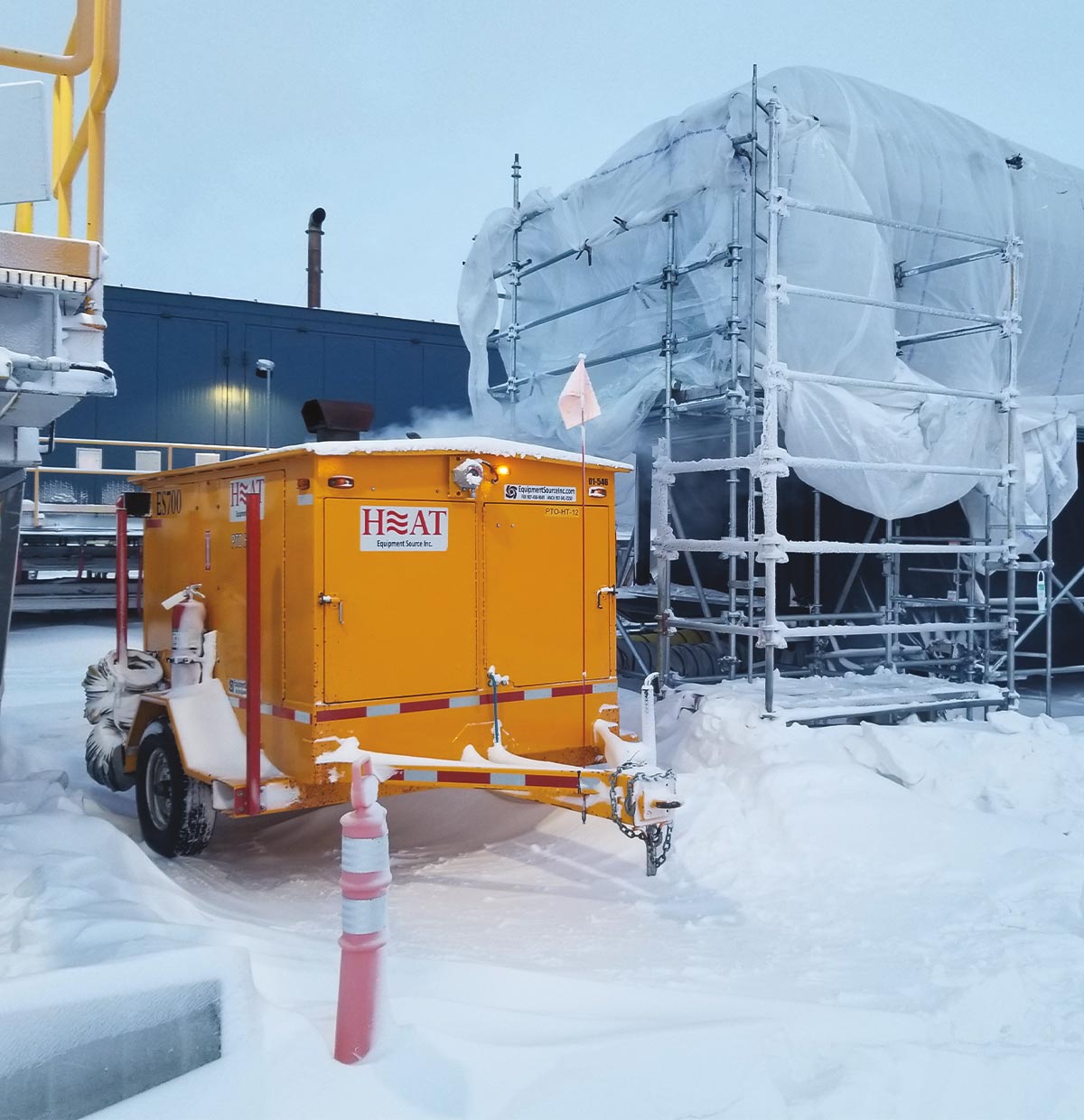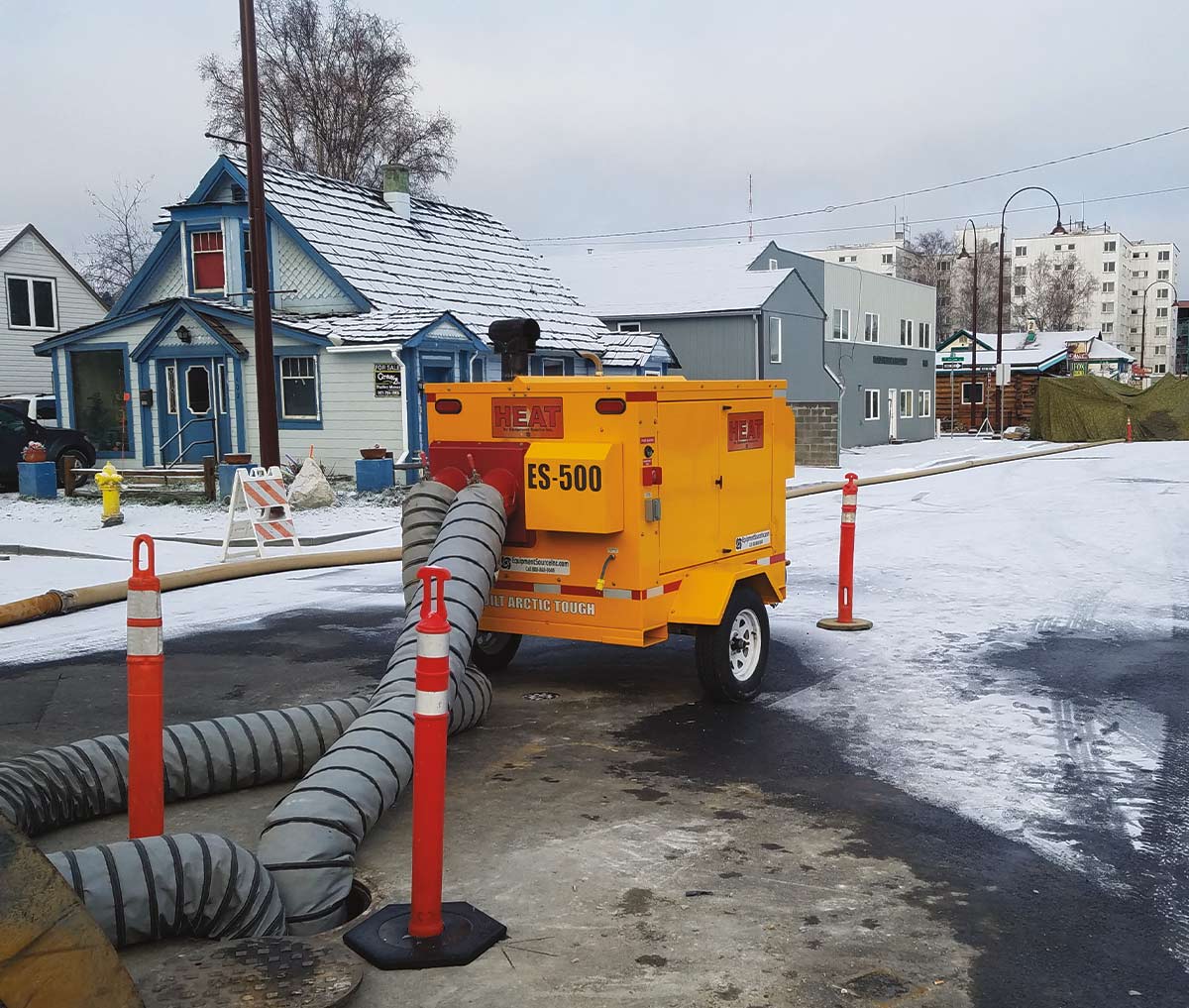arch 27, 1964 shook up the construction industry in Alaska. The magnitude 9.2 earthquake that Friday evening left 131 people dead as it crumbled streets, flattened buildings, and wiped out coastal towns. On top of the rubble, what was rebuilt was different from what stood before.
The quake contributed to knowledge about seismic design that could not have been understood beforehand. In 1964, the theory of plate tectonics was still being developed. Geologists had only two working seismographs in Alaska, one in Fairbanks and one in Sitka, according to John Thornley, a geotechnical engineer with WSP USA in Anchorage.
The only earthquake with a stronger measured magnitude, the 9.4 Valdivia quake in Chile, had occurred just four years earlier. A few months after the quake in Alaska, a magnitude 7.5 struck Niigata, Japan, making 1964 a pivotal year for seismology. “Those two earthquakes really woke a lot of people up to the need to really improve the understanding of how buildings and structures behave under seismic loading,” Thornley says.
Seismic engineering influenced new building codes. “Prior to the ‘64 earthquake, there really wasn’t a lot of oversight,” says Doug Hoftiezer, a construction technology instructor at the Alaska Vocational Technical Center in Seward. “When that earthquake hit is when we really realized we needed to have more oversight over the building industry to keep people safe.”
Aftershocks from the Good Friday earthquake can still be felt, metaphorically, sixty years later. The disaster left its mark on how buildings are designed and how they are constructed.
“The Geotechnical Advisory Commission is a fairly unique commission within the United States,” Thornley says. “There are not that many of these types of commissions within municipalities across the US West Coast,” where geotechnical review more often is the responsibility of a staff engineer.
The commission inventoried Anchorage’s geologic hazards in 1979, and it completed a risk assessment for the Downtown area in 2010. It found high or very high susceptibility to ground failure north of Sixth Avenue, west of I Street, on the bluffs along Chester Creek, and in the Turnagain neighborhood’s coastal areas. To cope with these hazards, the commission recommends methods for building safely.
Soil conditions took on new importance after 1964. “What are we setting this on?” is a question engineers and builders now routinely ask, Hoftiezer says. “And how are we going to hold this on that foundation?”
Builders knew about earthquakes before 1964, of course, but they had little guidance for best practices. Hoftiezer says, “Municipalities were grabbing whichever code they wanted to use. There wasn’t anything across the board that made sure we were all building up to the same standards.”
Prior to 1964, “The code was very thin with respect to seismic aspects,” says Thornley. “As the years went on and research went on to understand how buildings and other structures behave, the code kept getting thicker and thicker until you have what it is now.”
What the state has now is the International Building Code, which local governments amend to suit their particular needs.
Peter Haeussler | USGS

Another $3 million went to Seldovia, where homes on pilings sank below high tide. In Kodiak, the business district slumped 5 feet into the sea, and refilling the pit cost an estimated $6 million.
Larger than all those efforts combined was the $20 million rebuilding of Seward, where “petroleum tank farms along the waterfront went up in flames. The great seismic waves that followed spread blazing gasoline and oil over most of the community,” Kunreuther and Fiore reported.
Seward was on unstable ground to begin with. Hoftiezer observes, “Seward is built on a delta, basically, so how many thousands of years of organic debris was buried in the glacial till? As that stuff starts to decompose, the soil starts loosening up.”
Soil stability was less important than building quickly in the ‘40s, when Seward’s population more than doubled.
“I can drive around Seward and, to this day, almost pick out where the people that built certain houses came from in the Lower 48,” Hoftiezer says. “People brought up their building practices. They moved here from Arizona; they were putting in Arizona buildings.”
One telling feature is the dimensions of framing materials. In Seward’s oldest houses, Hoftiezer says, “their rafters are made of 2x4s. Nobody would put a house up with 2×4 rafters; we would do 2x12s. The ’64 earthquake really brought us forward on increasing the size of our framing, our bearing materials, our beams, our girders.”
Yet some pre-quake buildings survived. “It amazes me as I have gone through many different homes and businesses in this town and how well they’ve stood up for a hundred years,” Hoftiezer says. “They’re still in pretty good shape. So obviously the earthquake did a lot of damage, but it was almost like that earthquake took the weak out of the herd and left the strong standing.”
The strong survivors now have stronger neighbors, which Hoftiezer credits to Seward’s building department. “They’ve got very strict seismic codes, and we’re very careful now about building near tsunami zones. I mean, we know that’s going to be an issue even if the quake doesn’t hit here,” he says.

Equipment Source, Inc.
The report credited two new projects with instilling confidence in Anchorage’s business community. One week after the quake, the board of what is now First National Bank Alaska voted to proceed with a new Downtown building. Around the same time, real estate developer (later Governor and Secretary of the Interior) Wally Hickel went ahead with a $3 million plan to build the Hotel Captain Cook.
The hotel’s first nine-story tower opened a year later, overlooking the edge of Downtown that collapsed during the quake. The next two towers added to the property in 1972 and 1978 incorporated new insights into seismic design, each rising taller than the last.
The Earthquake Engineering Research Institute held conferences at the hotel in 2014 and 2019—but Thornley says it took some convincing. “The question was, we want to have our conference at Hotel Captain Cook, but, as earthquake engineers, we don’t want to have it at a place that may not be that stable,” Thornley recalls. But the building speaks for itself: “At the end of the day, the Hotel Captain Cook is a stable structure.”
With Hickel and First National leading the way, businesses finished rebuilding within a year. “Owners of commercial establishments now were convinced that they could not afford to bide their time in rebuilding, in the same way that displaced families were able to do,” Kunreuther and Fiore reported.
Ultimately, construction spending in Anchorage totaled $30.8 million in 1964, compared to pre-quake normality in the $6 million to $8 million range. The report notes, “The overall recovery of the community was quite rapid.”
After the earthquake in March, soil studies delayed construction contracts until late July. Kunreuther and Fiore stated, “The need to repair or restore facilities (e.g., schools) as rapidly as possible thus forced contractors to adopt new methods for continuing work on buildings which were not closed in by the end of October. By draping a plastic covering, such as Visqueen, over the partially completed structure, portable heaters were effective in warming up the work area.”
Common practice before 1964 was to halt all construction (except indoors) during the winter. “Theoretically, you can do building construction at 20°F below and it’s not going to hurt anything,” says Nick Ferree, vice president at Equipment Source, Inc. (ESI), “but realistically you have workers who need to be able to take their gloves off and deal with fine stuff inside the building, so you need a warm space to do that safely.”
Construction site heating is not a matter of comfort but of necessity. Ferree explains, “You’re pouring concrete in the cold, you know, if you don’t keep that warm, it’s going to freeze and not cure. Applying paint and caulks—there’s all sorts of reasons that things need to be warm.”
ESI started in 2000 as a heater manufacturer. The flagship model is the ES700, a trailer-sized unit that pushes 4,000 cubic feet per minute of warm air for up to 36 hours between diesel refills. Its energy output of about 800,000 British Thermal Unit compares to the boilers of six or seven Fairbanks houses put together.
The key feature, Ferree says, is the ES700’s reliability and simplicity. The 3-ton unit can go 3,000 hours between oil changes, which is especially handy on the North Slope. “You don’t want your guys wasting their time changing oil,” Ferree says. “So we set up [the ES700] for those extended service intervals, so they can run for the whole season and then come back in the summer.”
He admits that heaters aren’t necessarily exciting, and nobody wants to think about paying for the diesel fuel to operate them, but they have become essential tools for year-round work.
Even at the Alaska Vocational Technical Center, Hoftiezer says, “Our students are taught where and when heaters should be used as an acceptable part of the construction process.”
Equipment Source, Inc.

The industry in Alaska copied other states with cold winters. Ferree noticed that mentality in North Dakota, where ESI operated a branch at the Bakken oil fields until recently. “The difference in the Lower 48 is that winter doesn’t last long, so projects will shut down,” he says. “Some really cold days are like, ‘Let’s just not work today.’”
In 1964, post-quake construction didn’t have the luxury of waiting out a cold spell.
“One of the most beneficial of all possible economic effects of the earthquake is the change it may have induced in the length of the Anchorage construction season,” Kunreuther and Fiore found. “Due to the effectiveness of the plastic covering, contractors now feel it is to their advantage to continue this expansion of winter construction in the future.”
The authors noted that winter construction allowed contractors to avoid expensive overtime during the summer, and the workforce was more stable because construction laborers could earn a paycheck all year.
The new rhythm didn’t become industry standard immediately; winter was still an idle season into the ‘70s. “Contractors would try to have projects dried in by the end of fall shoulder season and work inside all winter,” Hoftiezer says. However, “As company sizes increased and economics changed over time, outside work in winter became the new normal.”
Sixty years later, a construction site wrapped in polyethylene stands as a living reminder of the earthquake that changed Alaska.